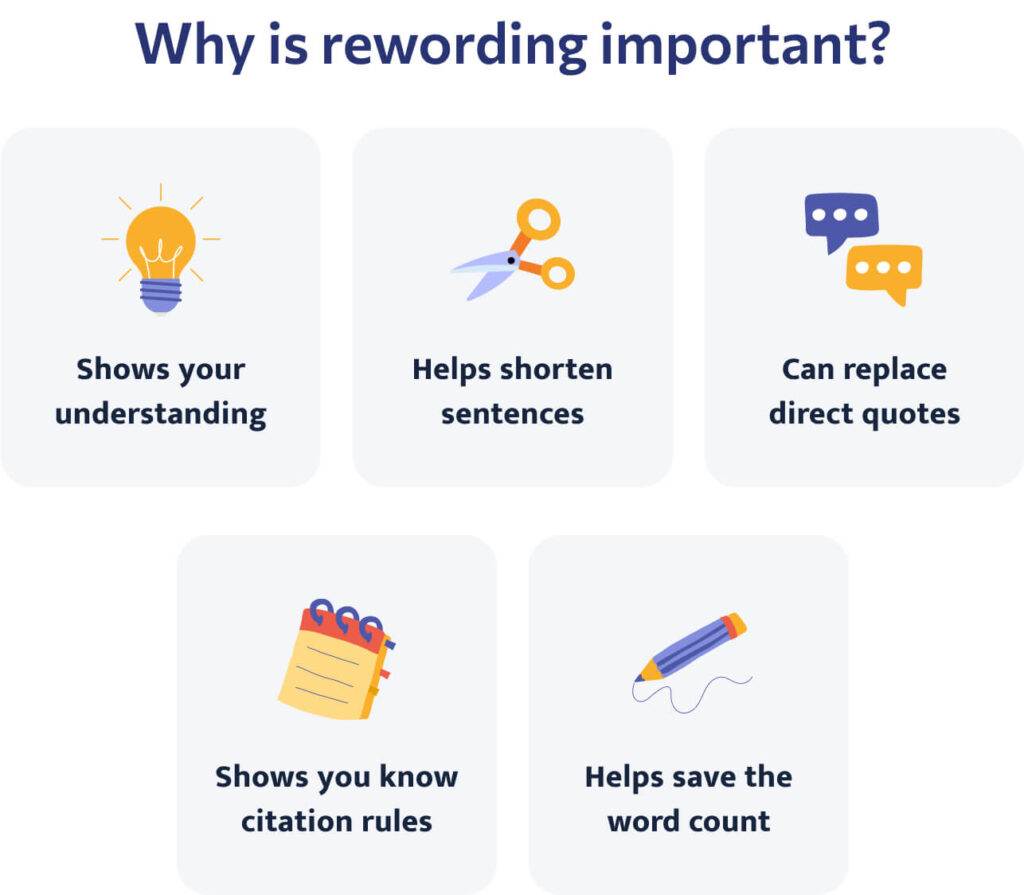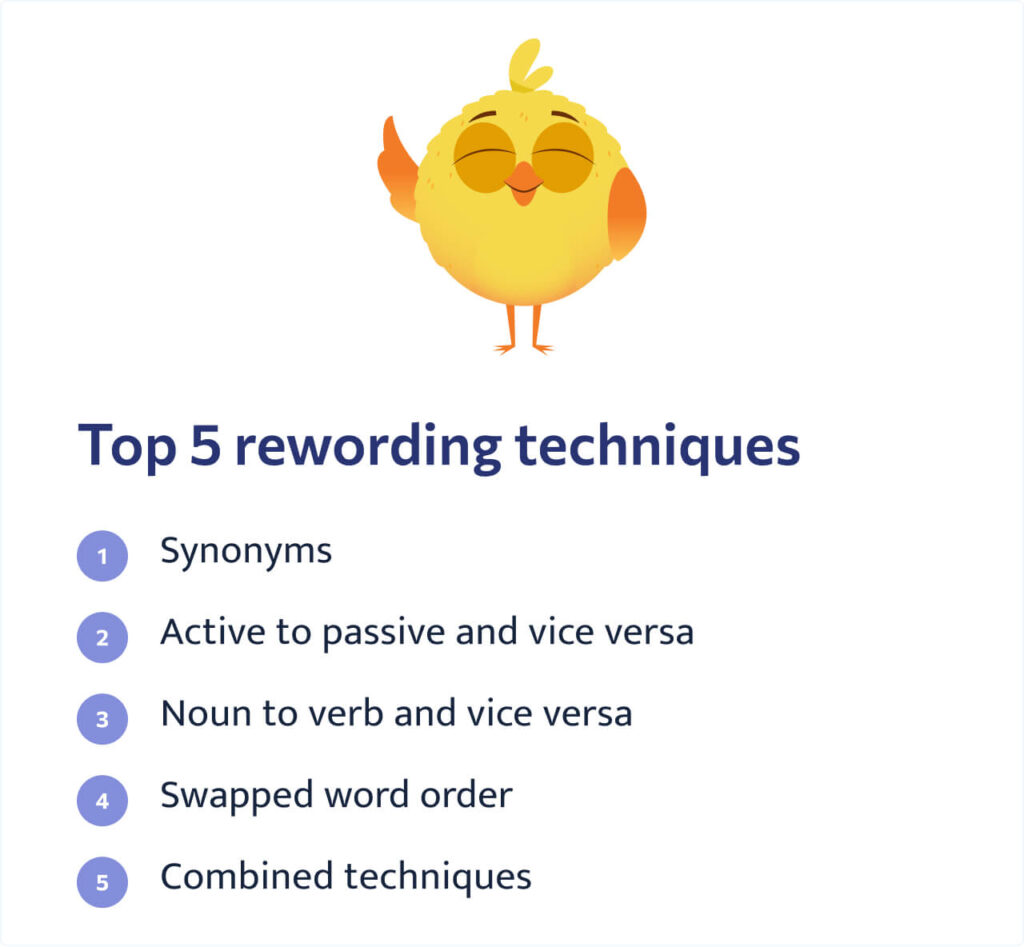🎓 Reworder: How to Use
This paraphrasing tool will let you reword any academic text in just 4 steps:
- Insert the piece into the text box below.
- Select the preferable share of words to reword.
- Click “Reword.”
- Check the new version of the text.
⚖️ Why Is Rewording Important for Law Students?
Rewording, or paraphrasing, is a useful tool for students of all majors.
Why is it so?

Here are some benefits of good rewording.
🏆 Top 5 Rewording Techniques with Examples
British Council recommends to use the following paraphrasing techniques.

1. Synonyms
The English language abounds in synonyms. In most cases, replacing the verbs and nouns with different words won’t change the meaning. But be careful with the stylistic effect not to make the tone too conversational.
2. Active to Passive and Vice Versa
Even most academic publishers tend to abandon the previously omnipresent passive voice. It unnecessarily complicates the already-complicated matters. That’s why, whenever you encounter such a formulation, don’t hesitate to convert it to the active voice. But, if necessary, you can do the contrary as well.
3. Noun to Verb and Vice Versa
You can change the parts of speech to get a more natural flow of language. Noun to verb and back is the most common way to do so. However, you can also change the word form as in the last word of the example below.
4. Swapped Word Order
It is a universal technique that shortens long sentences, condenses the meaning, and improves readability. In most cases, you’ll have to make other changes to make it work.
5. Combined Techniques
Relying on a single technique is realizable but dull and monotonous. Two or three of the methods mentioned above guarantee an effective result. In any case, try to be creative and unpredictable.
🔤 Rewording as a Way to Avoid Plagiarism
According to Merriam-Webster, America’s most trusted free online thesaurus, to plagiarize means to “use (another’s production) without crediting the source.” Even when students forget to include a proper reference out of sheer carelessness, it is also called plagiarism.
Therefore, habitual copy-pasting can entail severe consequences for young researchers.
But apart from the undermined reputation, plagiarism is unethical. Practically, it is a theft of intellectual property. This is true for publishers expecting compensation for a plagiarized article and students hoping for an “A” for stolen ideas.
Rewording is the best way to transmit a source’s ideas in your own words without altering their meaning. But watch out, as you can still slip into plagiarism.
Rewording without plagiarizing requires some diligence and attention to detail:
- Paraphrase and format the text initially (following the techniques above).
- Make as many changes to the original as possible while keeping the meaning intact.
- Always remember to credit the source according to the applicable citation style.
You can only avoid doing so if the borrowed information is a generally known fact (historical events, natural phenomena, etc.).
Thank you for reading this article!
If you need to polish your assignment even more, consider trying our other online tools for students:
❓ Reword Tool FAQ
❓ How to Reword a Sentence?
To reword a sentence, one should make various structural changes. Start with altering the word order, swapping the subject and the object. Doing so will require some other modifications to the verbs and word forms. Finally, use synonyms in place of the author’s wording.
❓ How to Reword a Paragraph?
- Decide if you need to preserve the original length. If yes, reword each sentence separately.
- If no, analyze which sentences or phrases can be omitted.
- Keep the overall structure: topic sentence – evidence – concluding sentence (or any other, depending on the original).
- Once the rewording is done, check if the meaning of your text corresponds to the source.
❓ How to Reword an Essay?
- Outline the main ideas. The thesis statement and topic sentences will help you doing so.
- Reword the sentences above to obtain a new essay structure.
- Expand the paragraphs with the available or additional evidence confirming the topic sentences.
- Verify the result for too similar structures and eliminate them by using synonyms.
❓ How to Reword a Thesis?
An online rewording tool is the best way to reword a thesis. Otherwise, you can paraphrase it as any other sentence. Preserve the central message by using the closest synonyms. If you change the word order, check if it does not alter the original meaning.
Updated:

